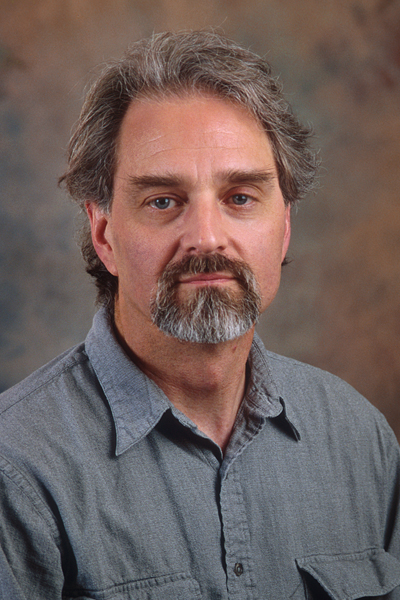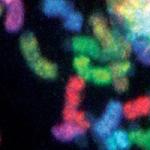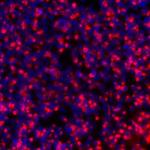
Michael M. Seidman, Ph.D.
Senior Investigator
Laboratory of Molecular Biology and Immunology
NIA
Research Topics
Cellular responses to replication stress
Age related decline of tissue and organ function, and the frank diseases of aging- cancer, diabetes, cardiovascular disease, neurodegeneration, etc.- are endpoints of a multitude of effectors that populate numerous feed-forward and feedback loops. At the most basic level, the diminished integrity of cellular macromolecules and macromolecular structures has adverse consequences for cellular and systemic physiology. The distinctions between genomic architectural compartments- heterochromatin and euchromatin- erode during aging, disrupting gene regulation and the control of transposable elements. DNA not only incurs mutations and rearrangements over a lifetime, but also acts as the locus of the DNA Damage Response (DDR) that reports genomic stress, with implications that extend far beyond the location of the provocative insult.
Impediments to DNA replication, referred to as replication stress, can stall replication forks triggering a cascade of responses that induce genomic rearrangements, cell senescence and/or apoptosis, and the activation of interferon pathways via cytoplasmic DNA sourced from nuclease vulnerable replication intermediates. Although these endpoints have attracted considerable attention, there is only limited understanding of the determinants of replisome stalling vs continued progression. While many proteins are recruited to stalled replisomes, current models simply assume a single species of “stressed” replisome. The connections to fundamental elements of chromosome biology such as chromatin structure and replication timing are largely unexplored. Research in the Section is focused on defining effectors of replisome structure and function in the context of replication stress, the consequences for replication fork stability, and the influence of aging on responses to replication challenge, and vice versa.
Replisome remodeling in response to replication stress
We developed an approached to visualizing the encounter of replication forks with the potent block imposed by interstrand crosslinks (ICLs). Contrary to over 50 years of conventional wisdom we found that replication could restart past an intact ICL, in a process we termed replication traverse. We identified FANCM, a DNA translocase, as an important contributor to the traverse phenomenon. Association of FANCM with ICL proximal replisomes resulted in remodeling of the replication machinery. More recently, we discovered that there are two biochemically distinct replisomes, distinguished by protein composition and chromatin localization. One species contains the DONSON protein. Hypomorphic mutations in this essential gene cause developmental abnormalities including microcephalic dwarfism. DONSON associated replisomes are preferentially active in euchromatin and early S phase. Under conditions of ICL induced replication stress FANCM associates with the other replisome, which is biased towards heterochromatin and late S phase. Our current effort is directed towards characterizing the factors that distinguish the different replisomes and direct their chromatin localization.
Biography
Dr. Michael Seidman received his Ph.D. in biochemistry from the University of California, Berkeley, in 1975. He did postdoctoral work at the NIH and at Princeton University. He worked at the NIH and in the biotechnology industry before assuming his present position in the Laboratory of Molecular Genetics, NIA.
Selected Publications
- Huang J, Liu S, Bellani MA, Thazhathveetil AK, Ling C, de Winter JP, Wang Y, Wang W, Seidman MM. The DNA translocase FANCM/MHF promotes replication traverse of DNA interstrand crosslinks. Mol Cell. 2013;52(3):434-46.
- Zhang J, Bellani MA, James RC, Pokharel D, Zhang Y, Reynolds JJ, McNee GS, Jackson AP, Stewart GS, Seidman MM. DONSON and FANCM associate with different replisomes distinguished by replication timing and chromatin domain. Nat Commun. 2020;11(1):3951.
- Huang J, Zhang J, Bellani MA, Pokharel D, Gichimu J, James RC, Gali H, Ling C, Yan Z, Xu D, Chen J, Meetei AR, Li L, Wang W, Seidman MM. Remodeling of Interstrand Crosslink Proximal Replisomes Is Dependent on ATR, FANCM, and FANCD2. Cell Rep. 2019;27(6):1794-1808.e5.
- Muniandy PA, Thapa D, Thazhathveetil AK, Liu ST, Seidman MM. Repair of laser-localized DNA interstrand cross-links in G1 phase mammalian cells. J Biol Chem. 2009;284(41):27908-27917.
- Liu J, Majumdar A, Liu J, Thompson LH, Seidman MM. Sequence conversion by single strand oligonucleotide donors via non-homologous end joining in mammalian cells. J Biol Chem. 2010;285(30):23198-207.
Related Scientific Focus Areas


Molecular Biology and Biochemistry
View additional Principal Investigators in Molecular Biology and Biochemistry



This page was last updated on Tuesday, August 15, 2023